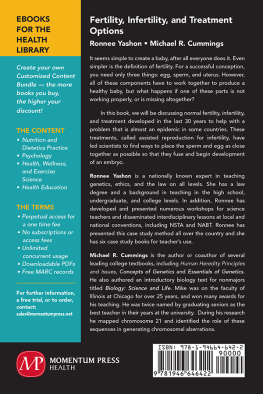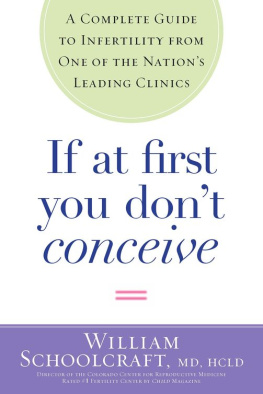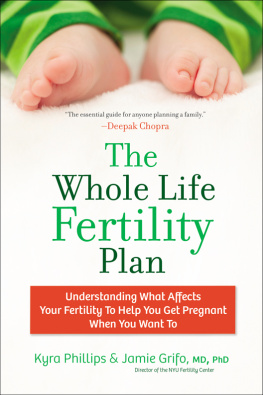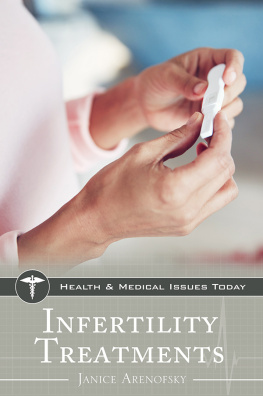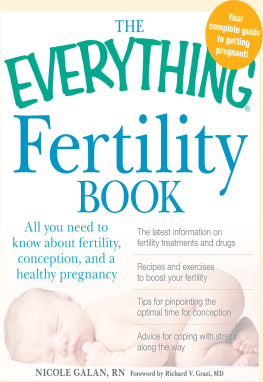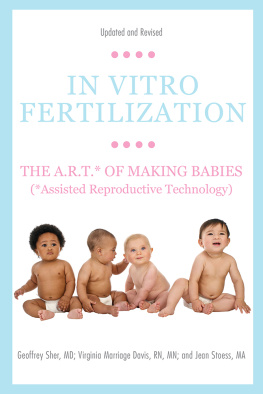
Fertility, Infertility, and
Treatment Options
Fertility, Infertility, and
Treatment Options
Ronnee Yashon and Michael R. Cummings

MOMENTUM PRESS, LLC, NEW YORK
Fertility, Infertility, and Treatment Options
Copyright Momentum Press, LLC, 2017.
All rights reserved. No part of this publication may be reproduced, stored in a retrieval system, or transmitted in any form or by any meanselectronic, mechanical, photocopy, recording, or any other except for brief quotations, not to exceed 400 words, without the prior permission of the publisher.
First published in 2017 by
Momentum Press, LLC
222 East 46th Street, New York, NY 10017
www.momentumpress.net
ISBN-13: 978-1-94664-642-2 (paperback)
ISBN-13: 978-1-94664-643-9 (e-book)
Momentum Press Human Genetics and Society Collection
Cover and interior design by Exeter Premedia Services Private Ltd., Chennai, India
First edition: 2017
10 9 8 7 6 5 4 3 2 1
Printed in the United States of America.
Abstract
It seems simple to create a baby, after all everyone does it. Even simpler is the definition of fertility. For a successful conception, you need only three things: egg, sperm, and uterus. However, all of these components have to work together to produce a healthy baby, but what happens if one of these parts is not working properly, or is missing altogether?
In this book, we will be discussing normal fertility, infertility, and treatment developed in the last 30 years to help with a problem that is almost an epidemic in some countries.
Often, treatment for infertility has led scientists to find ways to place the sperm and egg as close together as possible so that they fuse and begin development of an embryo. Some of these methods are quite remarkable. You are sure to know someone who has used one form or another of methods that are called assisted reproductive technologies (ART) and had success. Most specialists think that the age of the mother is one of the biggest stumbling blocks in conceiving a child. The older the mother, the more difficult it becomes. This is because as a woman grows older, her hormones decrease and her eggs might be damaged.
We are learning more about using these procedures, and the birth rate from ART is going up. In the United States, about 1 percent of all births result from the use of ART. This book will answer questions you might have about methods such as in vitro fertilization (IVF) and other commonly used forms of ART.
Keywords
ART, artificial uterus, assisted reproduction, egg, embryo, gastrula, genetics, ICSI, infertility, meiosis, mitosis, sperm, surrogacy, uterus
Contents
To begin with, we will discuss a little bit about the biology of cells, sperm, and eggs.
The average human body contains about 37 trillion cells. Each is surrounded by a membrane, and inside, contains a semi-liquid cytoplasm and a nucleus (red blood cells are the exception here; they do not have a nucleus). Within the nucleus are 46 chromosomes. Following is a drawing of a cell for you to review ().
The relevant parts of a cell are indicated in this drawing. Chromosomes and the nucleus containing them are the most relevant to the topic of this book.
DNA is one of the basic components of a chromosome (see ) and carries the cells genetic information. Chromosomes carry many genes, which create proteins that work within our bodies, having many functions. Each cell has the same number of chromosomes and the same gene set (check) as every other cell, but genes are turned on only when they are needed.
Parts of a chromosome are indicated here. Arms (3 and 4) and centromere (2).
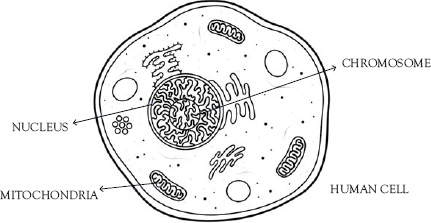
Figure I.1 Cell
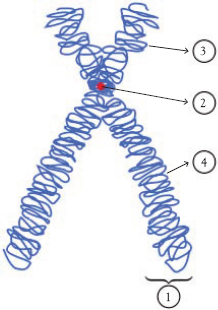
Figure I.2 Human chromosome
An example might be stomach acid. This chemical is made by up of proteins in the cells lining the stomach and breaks down foods for digestion. The stomach acid is very acidic.
What might happen if this gene became active in the eye?
Now that we have introduced cells, lets look at the gametes, the reproductive cells produced by mature men and women. Beginning at puberty, males form sperm from special cells in the testes. These cells are called spermatogonia and contain a complete set of chromosomes (in humans, this means 46 chromosomes). First, spermatogonia undergo a type of cell division called meiosis or reduction division and end up with 23 chromosomes. Then, over a period of days, these cells gradually transform into sperm, complete with a tail (for movement). Eggs are formed by females before birth within the ovaries from cells called oogonia. The oogonia also undergo meiosis, and in the end, contain 23 chromosomes, similar to the sperm.
Normally, if all goes well, after intercourse, sperm and egg fuse to form a single cell called a zygote, which now contains 46 chromosomes (23 from the sperm and 23 from the egg). Mitotic divisions in the zygote begin almost immediately, and continue until birth.
Can you guess the number of divisions between fusion of sperm and egg and birth?
In the chapters that follow, we will explore the details of mitosis and meiosis, how the sex of a baby is determined, and what is needed for a successful pregnancy.
Questions (in italics) are scattered throughout this chapter and the following chapters. Watch for them and think about how they may apply to you and the case in .
Cell Division
Mitosis is a form of cell division that produces two daughter cells that are genetically identical to the parent cell. Since each daughter cell carries the same genetic information as the parent cell, the chromosomes are copied before mitosis begins. The process of mitosis is divided into stages defined by the processes completed in each stage. These stages are .
In the embryo and fetus, mitosis creates new cells that form all the organs and body parts before birth. During infancy and childhood, mitosis produces the cells that contribute to the growth, maturation, and transformation of the child into an adult. In adults, growth takes place, and mitosis is mainly responsible for replacing dead and worn-out cells. In a normal adult, mitosis produces over 200 billion cells every day to maintain the body.
We all begin life as a single cell, the zygote, which results from the fusion of a sperm and egg, an event called fertilization. Gametes, the cells involved with reproduction, are formed in the testes (sperm) and the ovaries (eggs). Cells in the testes and ovaries undergo another form of cell division called meiosis, which reduces the number of chromosomes in the parent cell by half. At the start of meiosis, cells contain two copies of each chromosome, for a total of 46 chromosomes. During meiosis, members of a chromosome pair separate from each other and end up in different cells, resulting in cells with 23 chromosomes. This process involves two rounds of cell division, and is necessary to produce sperm and egg cells for reproduction. shows how meiosis occurs.
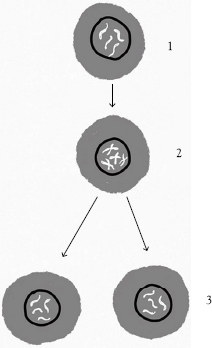
Next page
